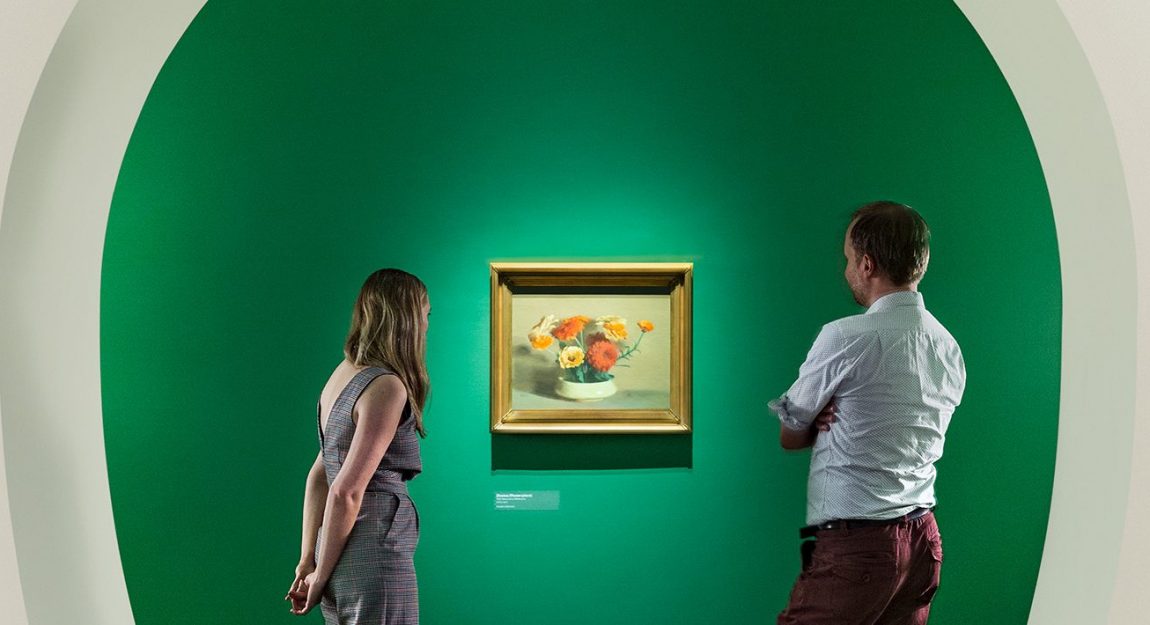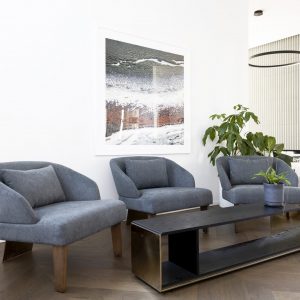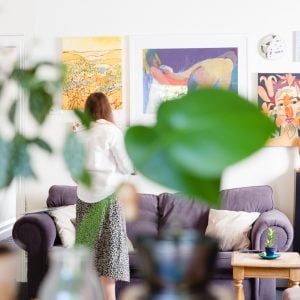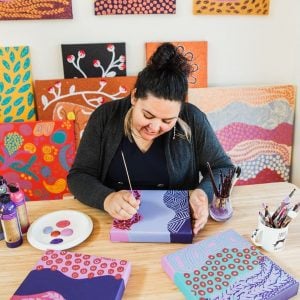Art Terminology 101: 20 Art Terms to Describe an Artwork
Just like any field of speciality, there’s a language that floats around specifically for art. It might seem overwhelming, but knowing a handful of art terms to describe an artwork is extremely nifty when the time calls for it.
We’ve recently updated our subject and style categories, and the choice now is outstanding. Our Collections split into two new categories: Subject and Style. You’ll find 39 options for your choice of subject, and 20 options for style. The choices of medium available now contain a staggering 35 options. It’s time to brush up on our art terminology once again, and navigate these options with twenty new art terms.
Art Deco
Art Deco is a style originally found in architecture, design and fine art of the 1920s and 30s. This art term fuses a wide range of influences, including cubism, ancient Aztec and Egyptian art, and industrial design, especially trains, cars and boats. Art Deco was a fairly short-lived style that was associated with the economic boom of the 1920s. However, it continues to inspire interior design trends and art today.
Acrylic
Acrylic paint, which first started to be used by artists in the 1960s, consists of a mix of pigment and synthetic resin. Because acrylic is water-based, it tends to dry quickly, and can be diluted with water to give a range of painterly effects that can resemble watercolour. Acrylic tends to dry to a matt finish and lacks the rich tonality of oil paint. British artist David Hockney made use of acrylic’s distinctively flattened surface effect when painting the pools and private residences of Los Angeles in the 1960s.
Australiana
You’ll see this style all over Bluethumb! Australiana involves the people and places, flora and fauna, items, objects and events of Australian origins. Australiana is anything concerning Australian culture, society, geography and ecology, especially if it is native to Australia.
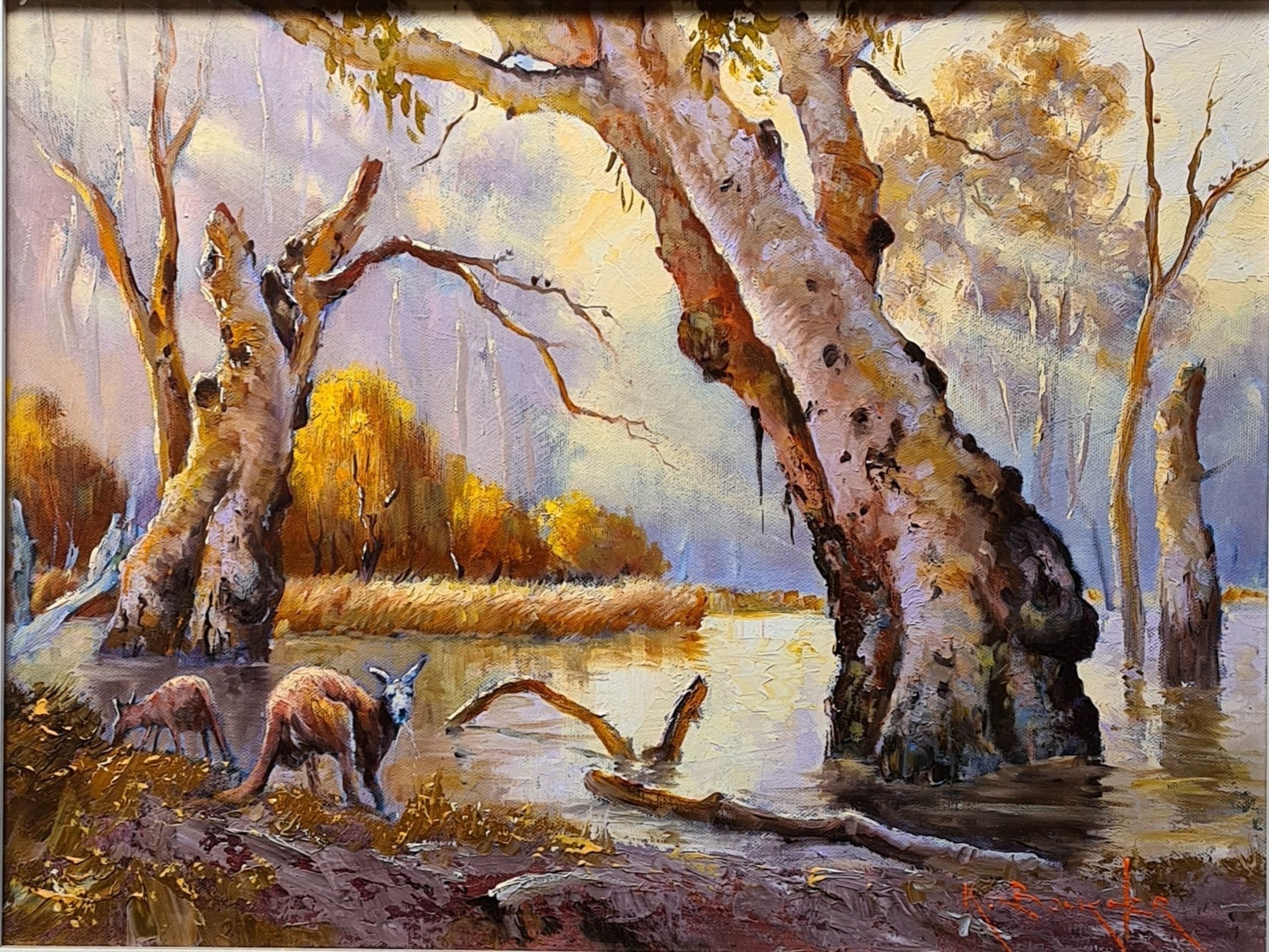
It’s impossible to choose the paradigm artwork of Australiana, but this piece by Kevin Boucher gives a great example!
Avant-garde
Here’s a fun fact: Avant-garde was originally a military term for the troops at the front of an army, who push forward before the others. The English equivalent is vanguard! In this more cultural sense, the avant-garde pushes ideas and forms forward, often causing shock or consternation for those who have not caught up yet. You might hear avant-garde being used to describe music and fashion, as well as a handy art term.
Brushwork
An artist’s brushwork refers to the way they use their brush to put paint on a canvas and the effect that this has in the picture. The brushwork chosen creates varied results in the texture of a piece. You might see thick build-ups of paint, smooth lines, delicate or organic movements with brushwork. Short, chopping strokes, for example, can signify heightened activity, such as a crashing wave. As far as art terms go, this is a great one to have up your sleeve when describing an artwork!

Meredith Howse’s loose brushwork conveys the feeling in the air, and the movement in the breeze in this Dreamscape.
Diptych/Triptych/Polyptych
These terms describe altarpieces composed of a number of individual panels: two (diptych), three (triptych) or many (polyptych). Depending on the size of the painting, these panels might be hinged, allowing the altarpiece to be folded up for moving. Usually, though, you’ll find them free standing on Bluethumb.
Documentary
A prominent style of photography, documentary photography provides an accurate representation of its subject and story. You might see social documentary come into play within this genre, whereby artists see the camera as a tool for social change, using it to shed light on social matters. This is often subjective in nature, however, whereas traditional documentary photography takes a straightforward, objective approach.

Photography Paul Skinner captures documentary photography based between portraits and landscapes; his intuitive style differs upon the film format he is shooting on. Featured: Jordan #8
Expressionism
In expressionist art, intense and non-naturalistic colours are frequent. Free-flowing brushwork is common, and there tends to be a generous, highly textured paint application. Expressionism lends itself to emotional, sometimes mystical sentiments.
Figurative
Born somewhat as a response to abstract art, figurative art refers to artists that retain aspects of the real world as their subject matter. However, this doesn’t necessarily mean figurative art is realist – one of the greatest artists exemplary of modern figurative painting was Pablo Picasso, father of Cubism. Compare figurative to abstract art in our other blog on art terms here.
Hue
Hue is often brought up when describing an artwork in relation to colour and saturation. It basically refers to a colour’s position on the colour wheel. Our main hues are red, blue, green, yellow and orange. Within these main hues are overlaps, where diverse ranges of colour can be used within the same artwork.
Limited Edition Print
Having a limited edition print means that your print of an original artwork is part of a limited number that exist in that size. Limited edition prints are considered more of a rarity than open reproduction prints, and therefore often have a higher perceived value as they will not be printed again.

With only 5 editions of this photograph in existence, it really is something to marvel at: We Are All Star Stuff by Alex Frayne
Mid-century
Mid-century often comes paired with a form of modernism – yet mid-century modern is a little difficult to define! Broadly, it describes architecture, graphic design and furniture from the middle of the 20th century. This timeframe is roughly from the 1930s to the 1960s, a modifier for the larger-known modernist movement.
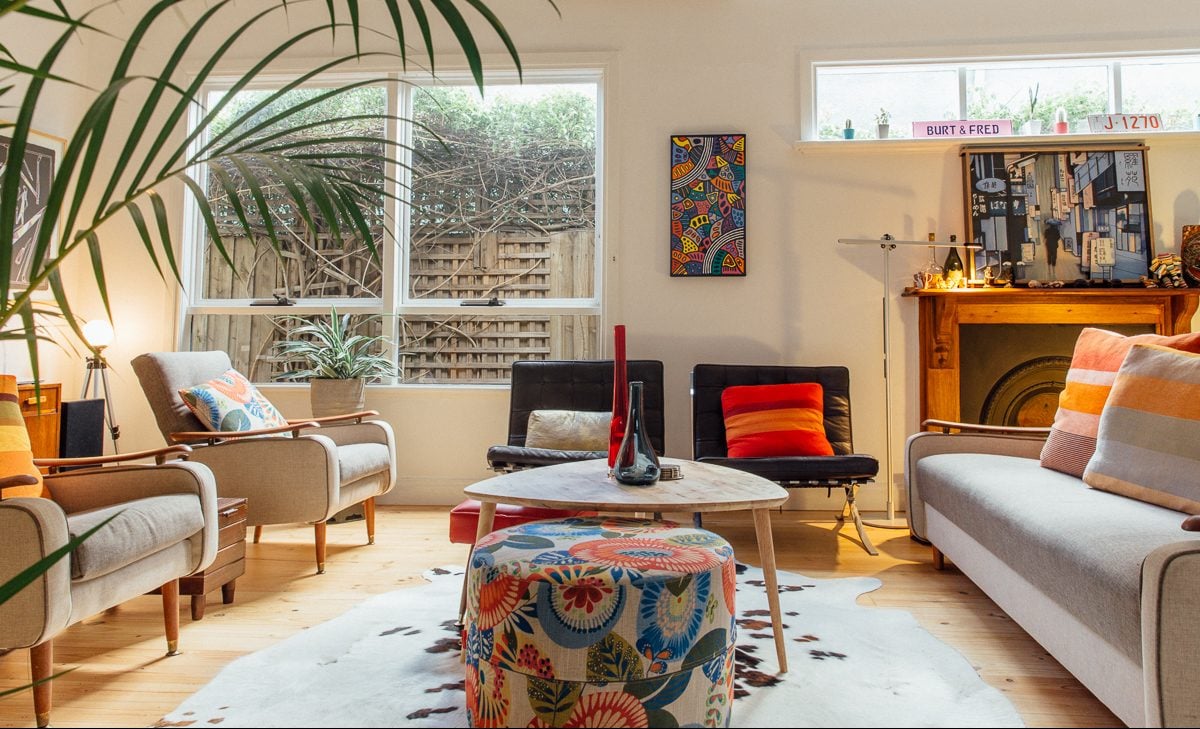
Our Head of PR Freddy Grant has a clear affinity for mid-century interior trends!
Mosaic
An ancient form of decorative art, mosaic is used to cover large surfaces, traditionally the interiors of religious buildings. A mosaic is composed of up to thousands of small pieces of glass, ceramic or marble, which are permanently affixed to a surface, such as a ceiling, wall of floor – and, if you’re looking on Bluethumb, a portable panel! If mosaic is laid down in a slightly uneven manner, it will reflect light in diverse ways, seeming to glitter; this is often seen when glass tiles containing gold leaf are used on ceilings.
Monochrome
A monochrome work of art is made in a single colour. This can be as extreme as an all-white, such as were made be a range of artists in the twentieth century. The effect of monochrome painting can be to call attention to the fiction of art itself, making a painting seem like stone, or it can be a means of considering formal qualities of the work, without making any associations with the world beyond.
Oil Paint
Oil paint consists of raw pigment suspended in an oil medium, usually linseed or walnut oil. Because it is very slow drying, oil paint enable artists to make gradual changes to their painting over time, something often revealed in pentimenti (faded areas through which under layers show). Oil is a diverse medium, allowing for thick, gooey impasto and wet-in-wet blending, as well as thin, translucent glazes and subtle tonal ranges. Oil holds colour efficiently, creating rich depths and subtle realism in the depiction of flesh, fabrics and textures. For these reasons, oil became the medium of choice for portraits of individuals from the Renaissance onwards.

Painter Marie Pol is loyal to oil as her medium of choice – and we can see why! Here she shows what’s possible with such a diverse paint. Featured: Ensemble
Old Master
Old master is a term often used to describe works of art made in Western Europe between 1400 and 1800 in the tradition of the Italian Renaissance, and is frequently used in the art market to refer to a sale of artworks from that period. The term suggests a certain standard of quality and a relationship to a tradition of virtuosity, naturalism and illusion.
Check out our recent curation of artworks inspired by the masters here!

The Nautilus Shell Ornament by Jos Kivits was strongly influenced by the 17th Century Dutch masters. The Nautilus shell was the only physical prop used; the statuette, ceramic ribbed bowl, persian rug and everything else were purely imaginary, from mind to brush.
Palette
The term palette has two related but slightly different meanings: it is both the handheld board used by painters to mix their paints on and a painter’s choice of colours in a work. A painting might have a muted, vibrant, limited or decorative palette, for example. A particular range of colours can evoke a certain atmosphere in a work: For instance, a muted palette might suggest a melancholy or sinister tone.
Photorealism
Photorealism is one of our new art terms added to the selection of styles on Bluethumb. Photorealist paintings attempt to capture the visual world with the accuracy of a camera’s eye, and often mimics the depth of field and lens flare found in its photographic source material. Back in 1960s America, photorealism was fast emerging as a slow process, often aided with a projection of a photograph onto a canvas as a guide. It’s the tension between the quickly made original photograph and its slow reproduction that makes such paintings compelling. In early photorealism, the uncanny precision gaves the often dull subject a strange, almost surreal intensity.
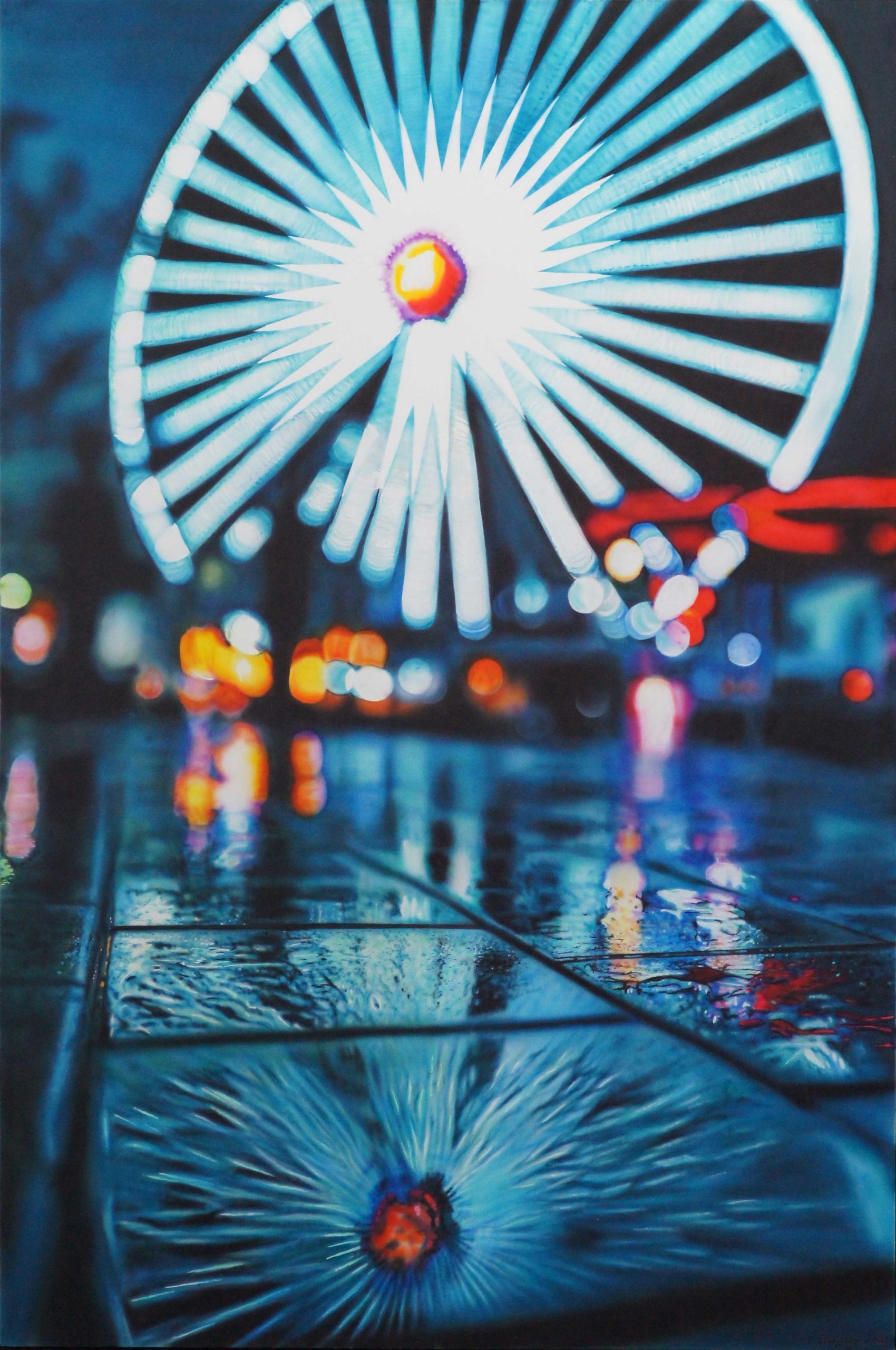
This image oozes everything that Collectable artist Todd Simpson looks for in an urban scene to – blur against sharp focus; perspective, reflections and a palette of oranges and reds that pop against the blues and darks of the night. Featured: Showtime
Street art
Using public space as a canvas on which to express political opinions or personal resentment, or simply to announce one’s existence, has an ancient story. However, the term Street art emerges out of mid-1970s American urban graffiti culture, which focused primarily on text or images sprayed using aerosols. Street art, by contrast can include a vast array of different approaches, including stencils, projected light and video, and even sculpture. Street art is often politically engaged and critical of prevailing power, but it is just as often not.
Nowadays, the sentiment of Street art is carried onto the canvas as an expression of style, ultimately conveying a slice of this original sentiment into people’s homes.
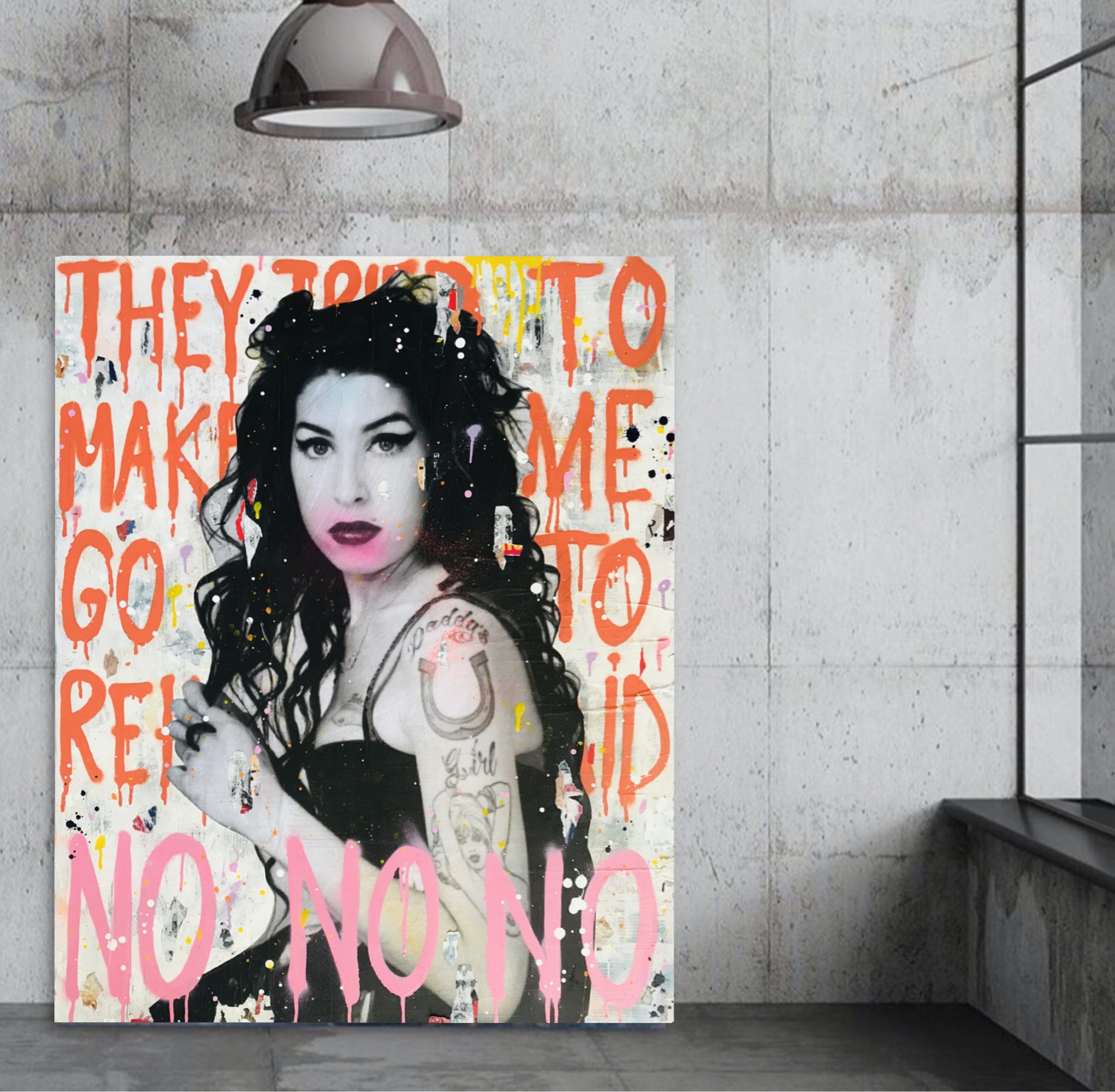
Artist Cold Ghost is best known for their urban pop mixed media collage paintings that reminds us of the posters of city streets. Featured: No No No
Reproductive Print
An artist may reproduce an original work of art as a reproductive print. Historically, this has allowed a much broader public to become familiar with paintings and other works, which had until then only been available to collectors of a certain socio-economic class. This is one of the more recent art terms added to Bluethumb.
Watercolour
Watercolour paint is made by suspending raw pigment in a binder, usually Arabic gum (derived from the sap of the acacia tree) mixed with water. Watercolour is generally used on sheets of white paper, where its thin consistency allows the brightness of the paper to show through, giving a general effect of radiance. Areas of the paper are often left unpainted to evoke highlights, or white gouache can be used for the same function. Because of its delicacy, watercolour is a challenging medium, although it is ideal for plein-air landscape painting, as it dries quickly and can be applied at speed.
Looking for More Art Terms?
Check out our previous Art Terminology blog for more art terms to describe art and impress your friends!

